Trinidad West Coast Mudflats
The northern end of the mudflats includes Caroni Swamp, Waterloo, and Orange Valley villages. Furthermore, the mangrove swamp and mudflats are attractive places for photography and bird watching. However, further south, heavy industry and residential areas mainly occupy the mudflats. Moreover, these west coast mudflats are essential for over-wintering gulls in northern South America and overwintering or migrant waders. Herons and ibis roost in the mangroves and feed at the mudflats.
Caroni Swamp
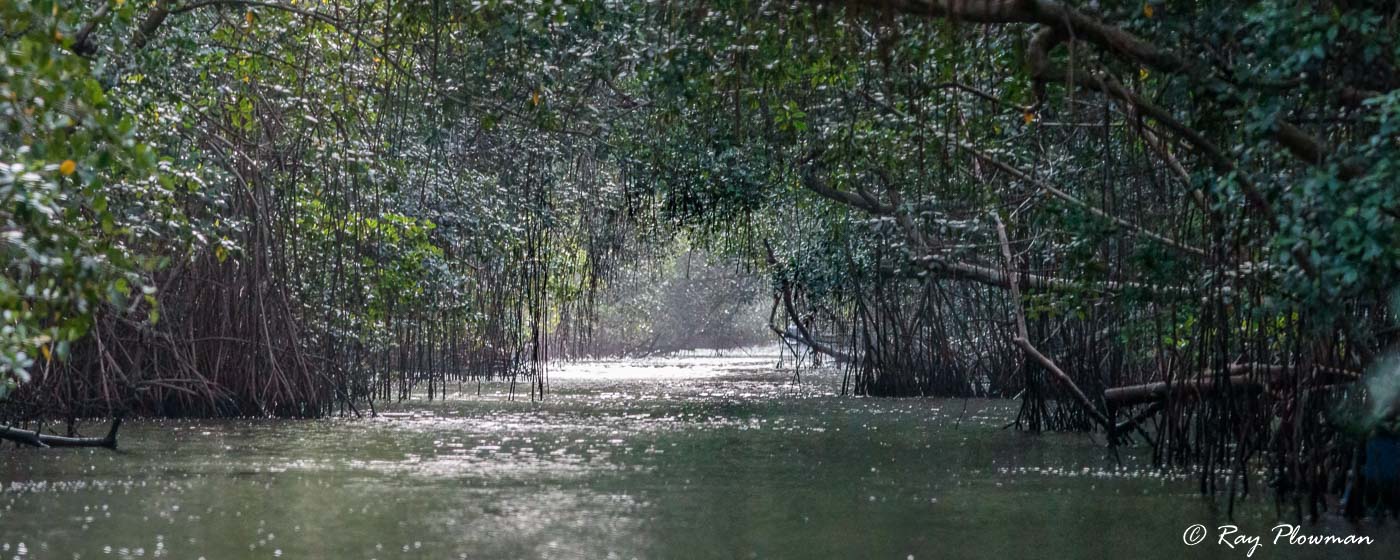
Mangroves and Channel at Caroni Swamp
Wildlife at Caroni Swamp
Caroni Swamp Wildlife
This large mangrove wetland is on the west coast of Trinidad, south of Port of Spain. And is easily accessible by car from the Caroni flyover junction on the Uriah Butler Highway. Two tour operators, namely Nanan and Madoo, both run late afternoon tours into the swamp. Nanan is the largest operator, and although Madoo is smaller, it offers a more personalised service. Therefore, we choose the Madoo tour departing from the Visitor Centre at 4.00 pm returning at 6.30 pm.
The main highlight is the red ibises that flock in the evening to roost, although it was not the best time of year for this spectacle as few birds returned to the swamp. Unfortunately, the boat anchors a long way from the roost, so I needed a long lens with larger apertures than I have. In contrast, you can get much closer to individual birds at Orange Valley Mudflats, and the light is much better.
Our guide was knowledgeable and stopped the boat whenever a wildlife photo opportunity arose. Feature photos include two images of tree-climbing crabs, a well-camouflaged long-nosed bat, and a Ruschenberger tree boa.
Birds at Caroni Swamp
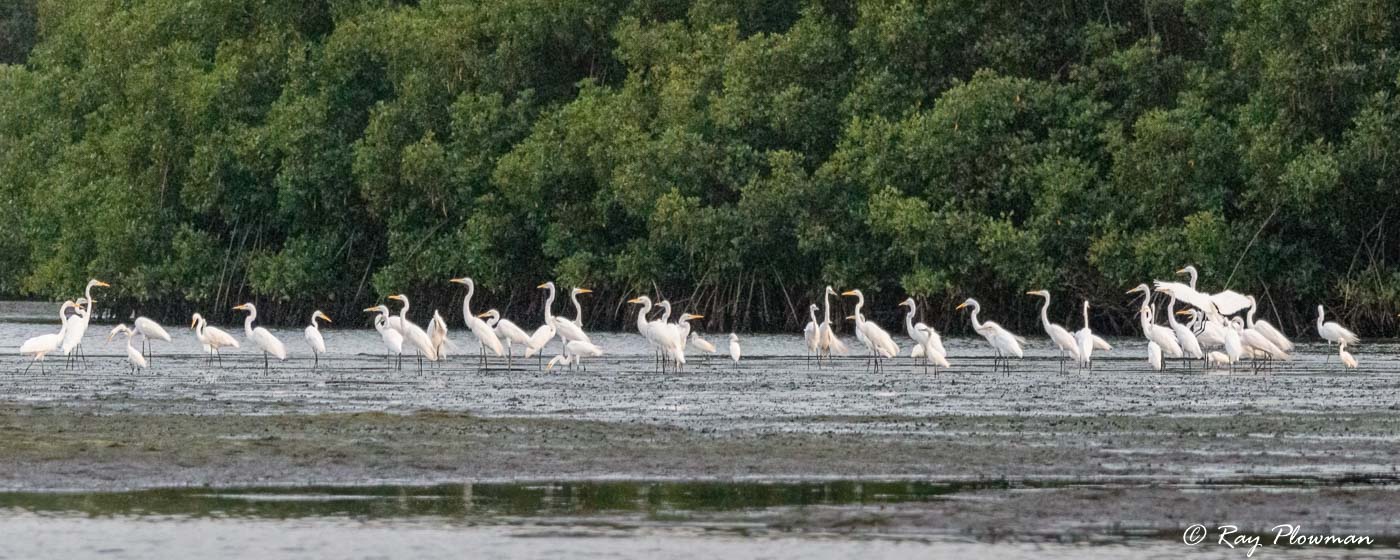
Western Great and Snowy Egrets feeding at Caroni Swamp Mudflats
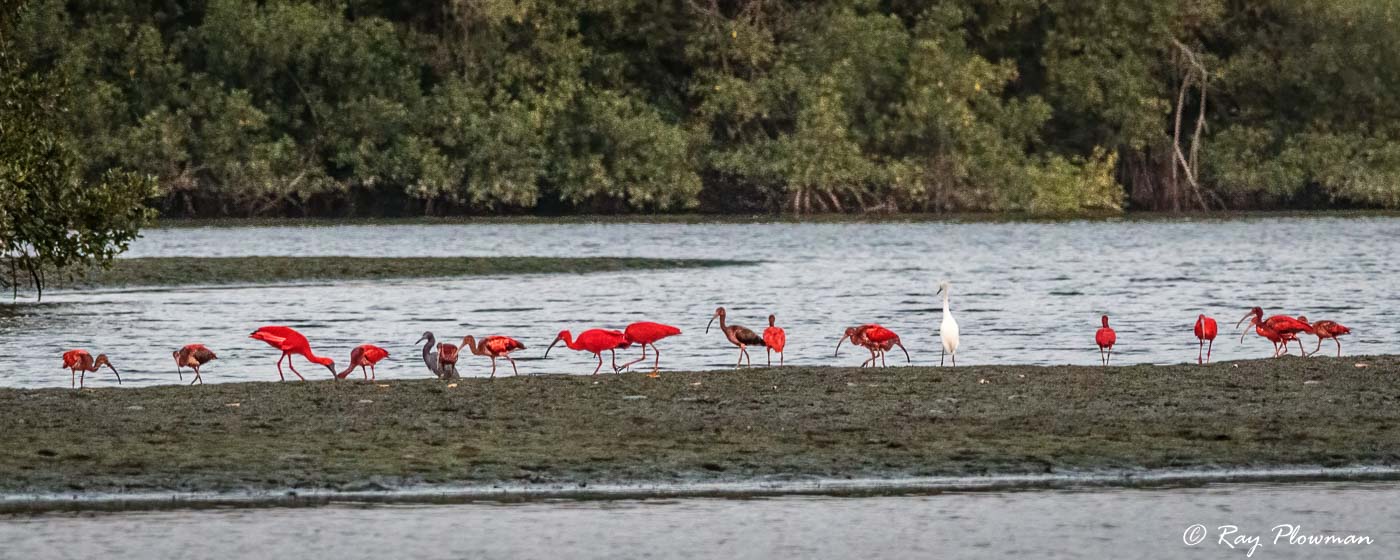
Scarlet Ibis feeding at Caroni Swamp Mudflats
Birds at Caroni Swamp
Caroni Swamp Birds
After 4.00 pm is not the best time to capture images in the tropics, especially in mangrove swamps where the light levels are low. I photographed nine species: three features in the panoramas. The first photo displays a flock of western great egrets and snowy egrets feeding on the mudflats. At the same time, the second features a scarlet ibis flock. Moreover, the photo gallery includes a single photo from Landbirds, two from Core Landbirds, four from Core Waterbirds, and one from Passerida II.
Waterloo and Orange Valley Mudflats
Waterloo and Orange Valley are on the west coast of Trinidad; from Port of Spain, it is around 50 km, 50 mins outside rush hour. Head south on the Uriah Butler and Sir Solomon Hochoy Highways to Chaguanus, then through Carapichaima, a series of Indian populated villages, to Waterloo.
Waterloo Mudflats
Waterloo Mudflats
Siewdass Sadhu’s Temple in the Sea is where Hindus perform puja ceremonies, weddings, and cremation funerals. In addition, there are many discarded puja items and prayer flags along the shoreline. Apart from Rudy Turnstones, none of the other species I observed was within my long camera lens range. In contrast, I found the mudflats at Orange Valley better for photographing birds, especially from the causeway.
Orange Valley Mudflats and Causeway
Orange Valley Mudflats and Causeway
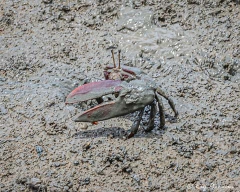
South on Waterloo Road is the village of Orange Valley and has a causeway at Orange Valley Bay Road. The causeway juts out into the Gulf of Paria, and fishermen land fish and anchor their boats. When I visited, it was quiet and mostly deserted. So, I photographed the fishing boats, wildlife, and birds. And then a shrine with puja prayer flags and other items along the causeway shoreline.
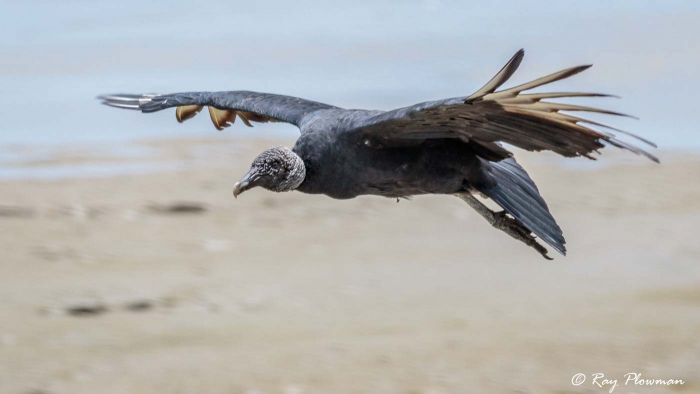
American Black Vulture flying at Orange Valley Mudflats
Birds at Orange Valley Mudflats
Birds at Orange Valley Mudflats
I drove onto the causeway and used it as a moveable hide to photograph birds on the mudflats. Then, as the tide came in, I moved the car to get close to the feeding birds, especially the Scarlet Ibises.
This gallery includes images from my Birds webpage: one from Landbirds (Cuckoo & Allies), three from Waterbirds (Waders/Shorebirds and Gulls-Terns-Skimmers) and four from Core Waterbirds (Egrets, Pelicans, and Ibises) species.
Trinidad’s West Coast Mudflats References: Online Resources
1. BirdLife International (2021) Important Bird Areas factsheet: West Coast Mudflats. Available from: http://datazone.birdlife.org/site/factsheet/west-coast-mudflats-iba-trinidad-and-tobago [Accessed 4th August 2021].































